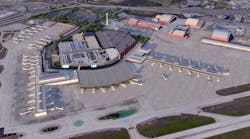There’s never been any such thing as a routine accident when a piece of ground equipment hits an aircraft. If we’re lucky enough that no one is injured, damage to the aircraft alone can quickly mount into the thousands, if not the hundreds of thousands. A belt-loader or a baggage cart hitting an engine nacelle or getting sucked into an engine can cause extensive — and expensive — damage. Damage to the fuselage or wings can also be costly to repair.
Well, someone has to pay for that damage, the equipment owner, the operator or the maintainer. It used to be that the owner, operator and maintainer were one and the same, usually the airline. If an accident happened, the airline was responsible and its insurance coverage would pay. Frequently, that is no longer the case. Ground equipment can be owned by one entity, operated by another and maintained by a third.
The more expensive the damage, the more wrangling with lawyers and insurance companies to see who is at fault and who will pay. I recently spoke with a friend of mine, a supervisor for a ground equipment repair company, who had just spent hours being interviewed by lawyers for the various entities potentially responsible for a ground accident that happened on his watch.
His version of the story is that a 737 pulled up to the gate and stopped. The usual ground equipment “attack” began, the catering truck, the lav service equipment, the belt loader and the jetway. Unfortunately, whether from speed, inattention or bad brakes, the belt loader struck the side of the aircraft, leaving a sizeable crease.
While responsibility has still not been determined, the hours away from his real job are mounting as more interviews are scheduled and more lawyers get involved.



